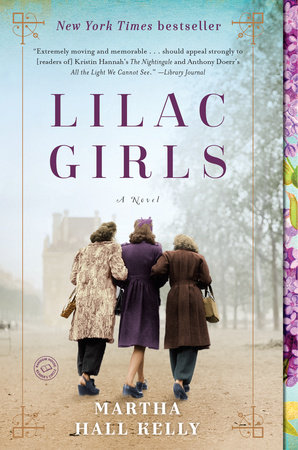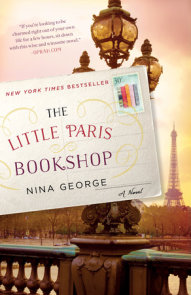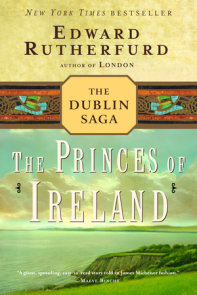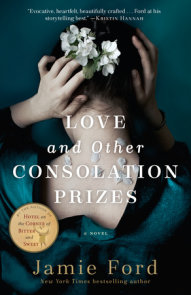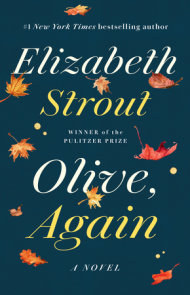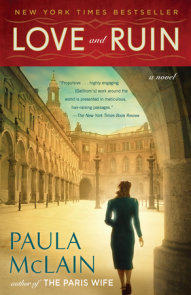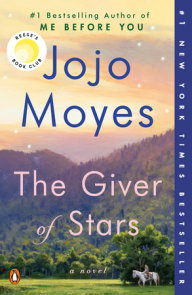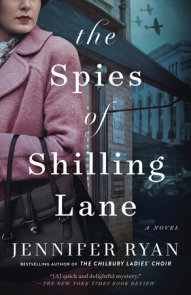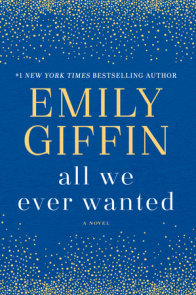READERS GUIDE
A Conversation Between Martha Hall Kelly and Lynn CullenWe asked Lynn Cullen, bestselling author of Twain’s End and Mrs. Poe, to pose some questions to Martha, author to author.
Lynn Cullen: The story of the prisoners at Ravensbrück, the only all-female concentration camp in Nazi Germany, is one that begged to be told with the insight into human behavior that only a novel can provide. Yet, more than seventy years passed before you brought this important episode in history to light in your novel, Lilac Girls. I strongly believe that important stories like this choose their tellers, not the other way around. Why do you think this story chose you?
Martha Hall Kelly: I do feel like something inhabited me the day I stepped into the lovely Bellamy-Ferriday House. Caroline? The Rabbits? Whoever they were, they led me on an incredible journey, through Poland, Germany and France to find the truth about this story. Perhaps all of those brave women, almost seventy years after World War II, wanted their story told.
LC: Is there one particular bit of research that drove you to write this book? Did the same trigger sustain you as you made your jour- ney of discovery through what must have been painful territory?
MHK: I found two manuscripts in Caroline’s archives, memoirs written by two of the so-called Rabbits. Caroline had paper-clipped the rejection letters from publishers to the manuscripts, as well as her apologetic notes to the women, telling them she had submitted their work to publishers and there was no interest in their stories. Seeing those rejections spurred me to write Lilac Girls and kept me going when I would hit a bumpy spot. It was great motivation knowing Caroline and the Rabbits wanted the world to know their story so badly.
LC: The incomprehensibly inhumane behaviors carried out in Ravensbrück represent the darkest side of the human animal. I applaud you for giving your readers an unsparing look at these atrocities but yet I’m also grateful that you juxtaposed the darkness with characters who appealed to what Abraham Lincoln called “the better angels of our nature.” Was it difficult to switch back and forth during the writing?
MHK: Writing in first person, it’s so easy to get immersed in the characters, good and bad. So, yes, it was a wonderful relief, after living with some of the terrible things that happened in the camp, to switch back to write about Caroline’s life in New York City. Not hard, really, because I loved writing every bit of it, even the most heinous scenes, but definitely an emotional relief sometimes.
LC: Has the writing of Lilac Girls changed your life?
MHK: Lilac Girls was my first novel and introduced me to the world of writing. Now, having something I can’t wait to do when I get up each morning has transformed my life in every way imaginable. It made me more confident about everything, more curious about the world and just a million times happier. Also, I’m a shy person but wanted to be able to speak out and stand up for things I believed in. Now, after spending so much time researching Caroline, who al- ways did the right thing, I find myself looking for people to help and wrongs to right. It seems corny to the usually cynical me, read- ing this over, but it’s true. Many readers write and tell me they have experienced that same urge to incite positive change after readingLilac Girls and it makes me incredibly happy.
LC: Can you share anything about your next project?
MHK: I can only say it’s a prequel to Lilac Girls and takes place dur- ing World War I. So far it has been great fun to write and I have done extensive research in Russia for it. I can’t wait to share it with everyone.
Questions and Topics for Discussion
1. In what ways do you think the alternating points of view helped to enrich the narrative? Was there ever a time you when you wished there was only one narrator? Why or why not?
2. The primary settings of this novel are starkly different – Caroline’s glamorous New York world of benefits and cultural events, and the bleak reality of life in a concentration camp. In what ways did the contrast between these two settings affect your reading experience?
3. Caroline’s relationship with Paul is complicated, taboo even, was there ever a time when you didn’t agree with a choice Caroline made with regards to Paul? When and why?
4. As Caroline became more and more invested in her work with the French Families Fund, and eventually with the “rabbits”, did you feel that she changed in any way? How were those changes apparent through her interactions with others?
5. Throughout their time in Ravensbruck, Kasia and the other prisoners found subtle, and not so subtle, ways to demonstrate their resistance. Discuss the variety of actions they took. Which of them did you find to be most powerful? Most moving? Most effective?
6. When Kasia learned that they were hunting “rabbits” on page 278 she thought “Just don’t feel anything. If you are to live, you cannot feel.” Do you agree with this statement? What do you think it says about the nature of survival? Is it relevant to any other characters in the book, not just the prisoners?
7. Did you find Herta to be a sympathetic character? Why or why not?
8. When Vilmer Hartman came to visit Ravensbruck he showed concern for Herta’s mental state. What do you think this revealed about her character? Had you previously thought about any of the points he made?
9. Though the Nazis made sure the German people only got their news from one media point of view, Herta’s father continues to read as many newspapers as he can. Does this relate to media today?
10. Did you feel that Halina’s ring was an important symbol in the book? How did Herta feel about the ring? Why did she keep it?
11. Throughout the novel, in and out of Ravensbruck, the characters experience harrowing, difficult situations. Was there one that you found more memorable than the others? Why do you think the author chose to include it?
12. If you had to come up with a single message or lesson to represent each of the main characters’ experiences – Caroline, Kasia, Herta – what would it be and why?
13. Many of the themes explored in Lilac Girls – human rights, political resistance, survival – are a direct result of the historical WWII setting. How are those themes relevant to current events today?
14. Lilac Girls also touches on a number of interpersonal themes including female friendship, mother-daughter relationships, love, infidelity, mental health, and more. How do these themes impact the characters’ lives?
15. What do you think the author hoped her readers would take away from this reading experience?







